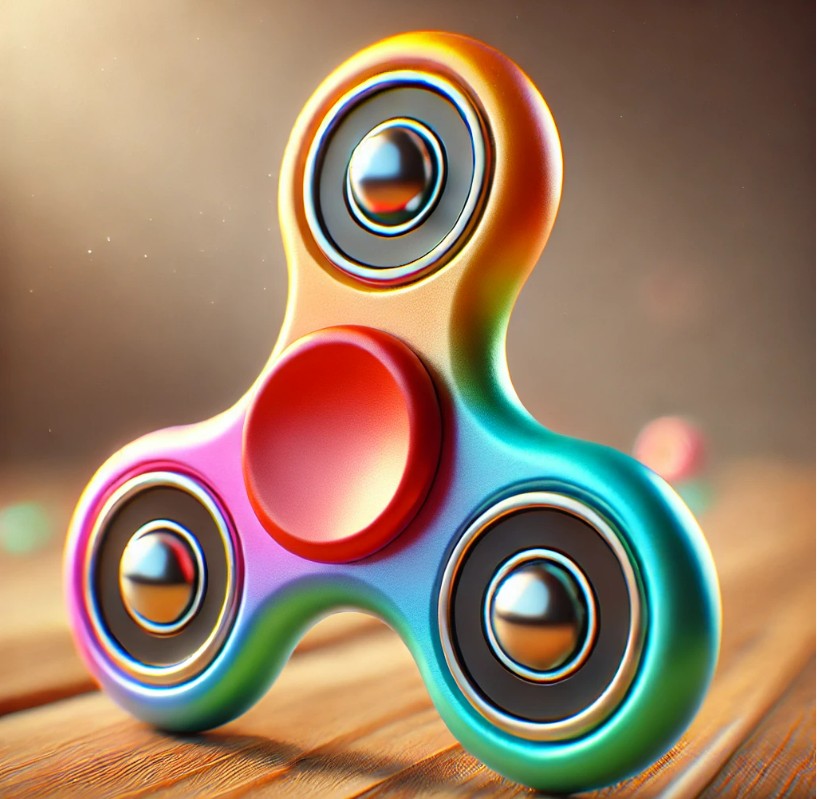In recent years, spinner toys have surged in popularity across classrooms, offices, and homes around the world. But what is a spinner toy exactly, and why has it become such a popular item? At first glance, these compact gadgets might seem like simple novelties, but their design, purpose, and cultural impact make them far more interesting than they appear.
What Is a Spinner Toy?
A spinner toy, most commonly known as a fidget spinner, is a small handheld device that consists of a central bearing and two or more weighted arms that spin around it. When held between the fingers and flicked, the toy spins rapidly with minimal effort. Though there are many variations in design—ranging from plastic to metal, basic to elaborate—the fundamental principle remains the same: smooth, continuous motion powered by a flick of the fingers.
Origins and Rise to Popularity
While spinner toys became a massive trend around 2017, the concept dates back to the early 1990s. Catherine Hettinger, often credited with conceptualizing a prototype, originally designed a spinning toy intended to help children with focus and stress relief. However, it wasn’t until decades later that the modern version exploded into the mainstream.
Thanks in large part to social media and viral marketing, fidget spinners were suddenly everywhere—marketed as tools to help with ADHD, anxiety, and even autism. Their hypnotic spinning motion, satisfying tactile feedback, and pocket-sized portability made them an instant hit.
The Science Behind the Spin
Part of what makes spinner toys so engaging is the physics behind them. Using ball bearings—often made of ceramic or stainless steel—the toy reduces friction, allowing the arms to rotate smoothly and for a prolonged time. The weight distribution and balance play a critical role in how long and evenly the spinner rotates.
For many users, especially those with attention disorders or sensory processing issues, this rhythmic motion offers a calming effect. It provides a form of kinesthetic stimulation—essentially giving the hands something to do, which in turn can help focus the mind.
Beyond Fidget Spinners: Other Types of Spinner Toys
Though fidget spinners dominate the category, the term “spinner toy” actually refers to a broad family of rotating gadgets. Here are a few examples:
- Infinity spinners: Designed to spin continuously with a flick, often used for stress relief or visual appeal.
- Gyroscopic spinners: Toys that involve rotational motion combined with angular momentum, often used in educational contexts.
- Light-up or LED spinners: These add a layer of visual entertainment, making them popular among kids.
Each type appeals to different age groups and user needs, from stress management to sheer amusement.
Do Spinner Toys Really Help With Focus?
This is where opinions vary. Some users swear by spinner toys as productivity aids, especially for those with ADHD, autism, or anxiety. The repetitive motion can act as a form of self-regulation, offering a way to manage restlessness or stress.
However, others argue that they may become more of a distraction than a help—particularly in classroom settings. The effectiveness of a spinner toy depends largely on how it’s used and who is using it. For some, it’s a calming tool. For others, it’s simply a fun diversion.
The Cultural Impact
Spinner toys have transcended their original purpose and become cultural icons in their own right. They’ve appeared in memes, fashion, and even been used in art installations. Their short-lived but intense popularity wave in the late 2010s also sparked discussions about toy trends, consumer behavior, and the psychology behind viral products.
Final Thoughts
So, what is a spinner toy? It’s more than just a gadget that spins. It’s a blend of design, science, psychology, and pop culture. Whether used for stress relief, focus, or fun, spinner toys have secured their place in modern toy history. Their enduring appeal lies in their simplicity—just spin, and let your mind follow the motion.
Get more updates or Stories on True Stars Magazine

















